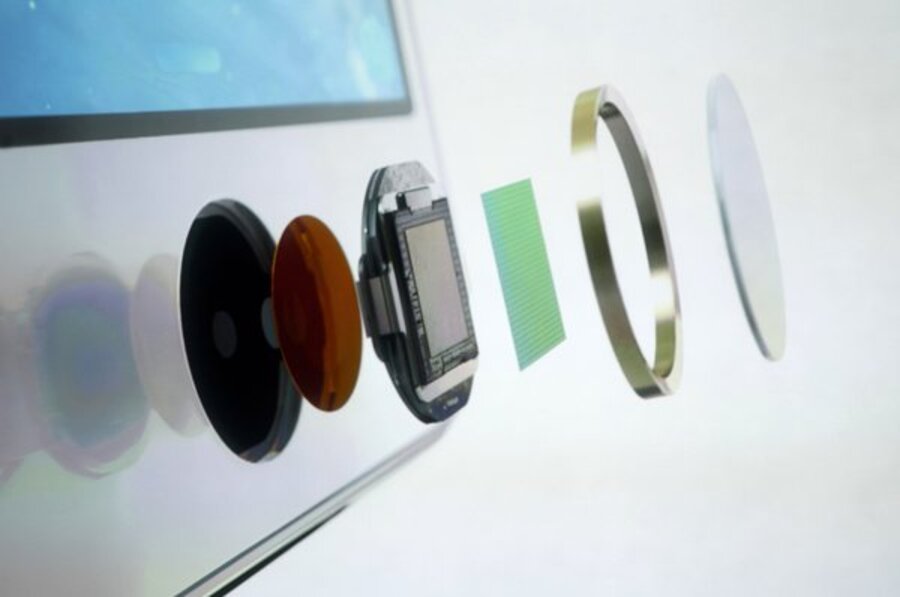iPhone 5S Touch ID: Your fingerprint is your password
Loading...
Tired of putting in a four-digit passcode every time you want to unlock your phone? The iPhone 5S can do it with your fingerprint.
This feature had been rumored ever since Apple bought security company AuthenTec, a firm that builds fingerprint readers, in 2012. But although fingerprint readers have been available on many laptop computers for years now, only one US phone – the Motorola Atrix 4G, which arrived in 2011 – incorporated that feature, and it never really caught on. Users wondered: could this kind of security be compromised?
In the iPhone 5S, Apple integrated the fingerprint reader into the “home” button located at the bottom of the handset. The “Touch ID” sensor is activated when you place your thumb (or, presumably, any finger you like) on the steel detection ring that rests around the button, and can read your fingerprint with an accuracy of 500 points per inch.
Apple has taken care in designing the fingerprint reader: the home button is made out of a sapphire crystal on the outside, so it won’t scratch, and the reader itself can detect a user’s fingerprint no matter how it’s oriented. At its presentation, Apple said that about half of users don’t bother setting up a passcode on their phone, finding it to be too clumsy as a security system. The company hopes the Touch ID reader will be both easier to use and more secure, since a user can briefly touch the home button to unlock his or her phone, without having to input a passcode. Early indications are that Apple has implemented this feature well: The Verge’s Dieter Bohn said he watched the iPhone 5S being unlocked “quickly and easily” via fingerprint, though he didn’t get to try it himself.
For now, the iPhone 5S’s fingerprint reader can be used only for unlocking the phone, and for authorizing purchases from iTunes and the App Store. Apple stressed that the fingerprint data couldn’t be accessed by apps running on the phone, meaning that there’s no increased risk of having one’s fingerprint stolen by a shady company. The fingerprint data isn’t sent to a server, either: the decryption is all performed on the phone itself.
Apple also gave the iPhone 5S the ability to recognize multiple fingerprints, which means users can allow family members or trusted friends to unlock their phone, without having to give out their passcode.
The Touch ID reader is only built into the iPhone 5S – not the colorful, lower-priced iPhone 5C, which the company also announced at its media event on Tuesday. The iPhone 5S will be available in 16GB, 32GB, and 64GB sizes, starting at $199, on Sept. 20.
For more tech news, follow Jeff on Twitter: @jeffwardbailey.








